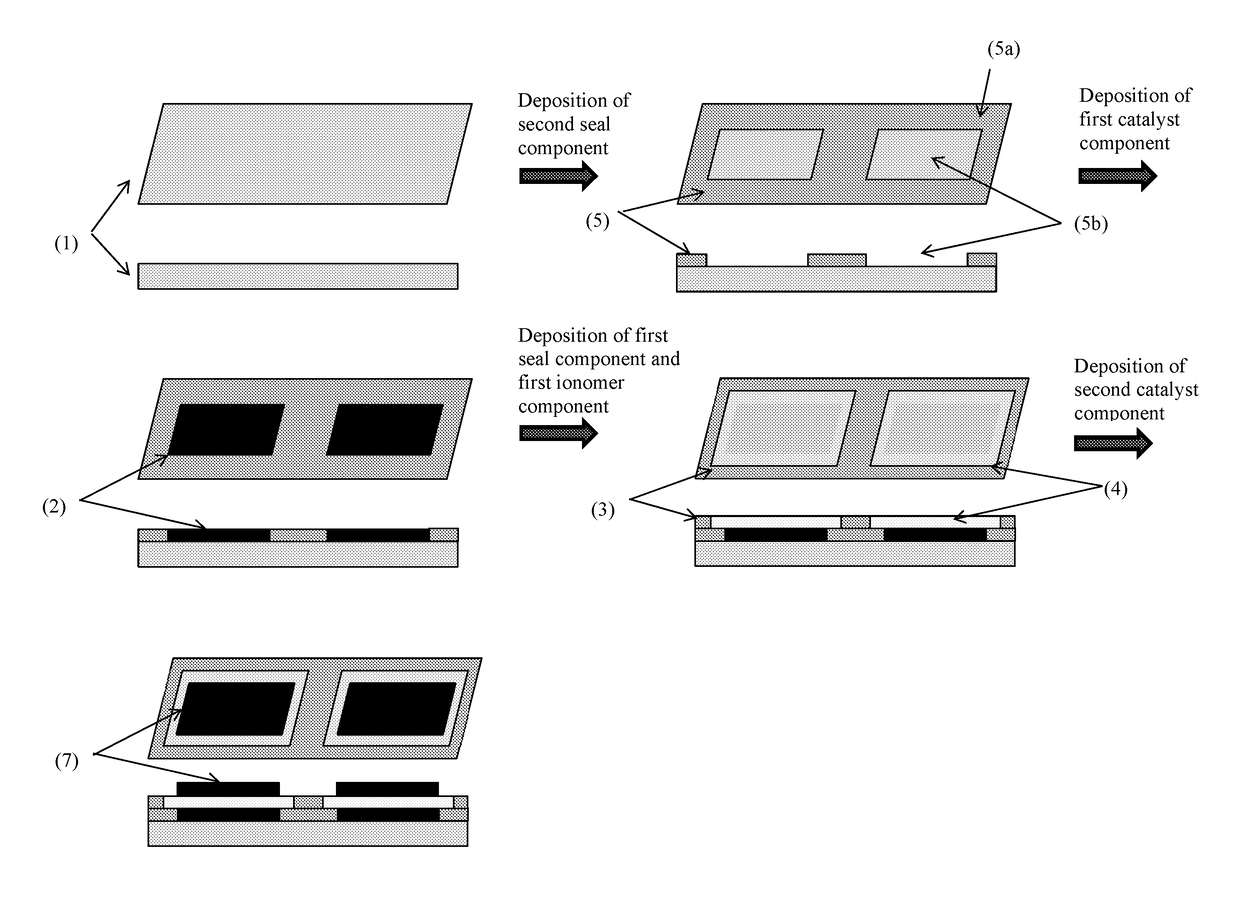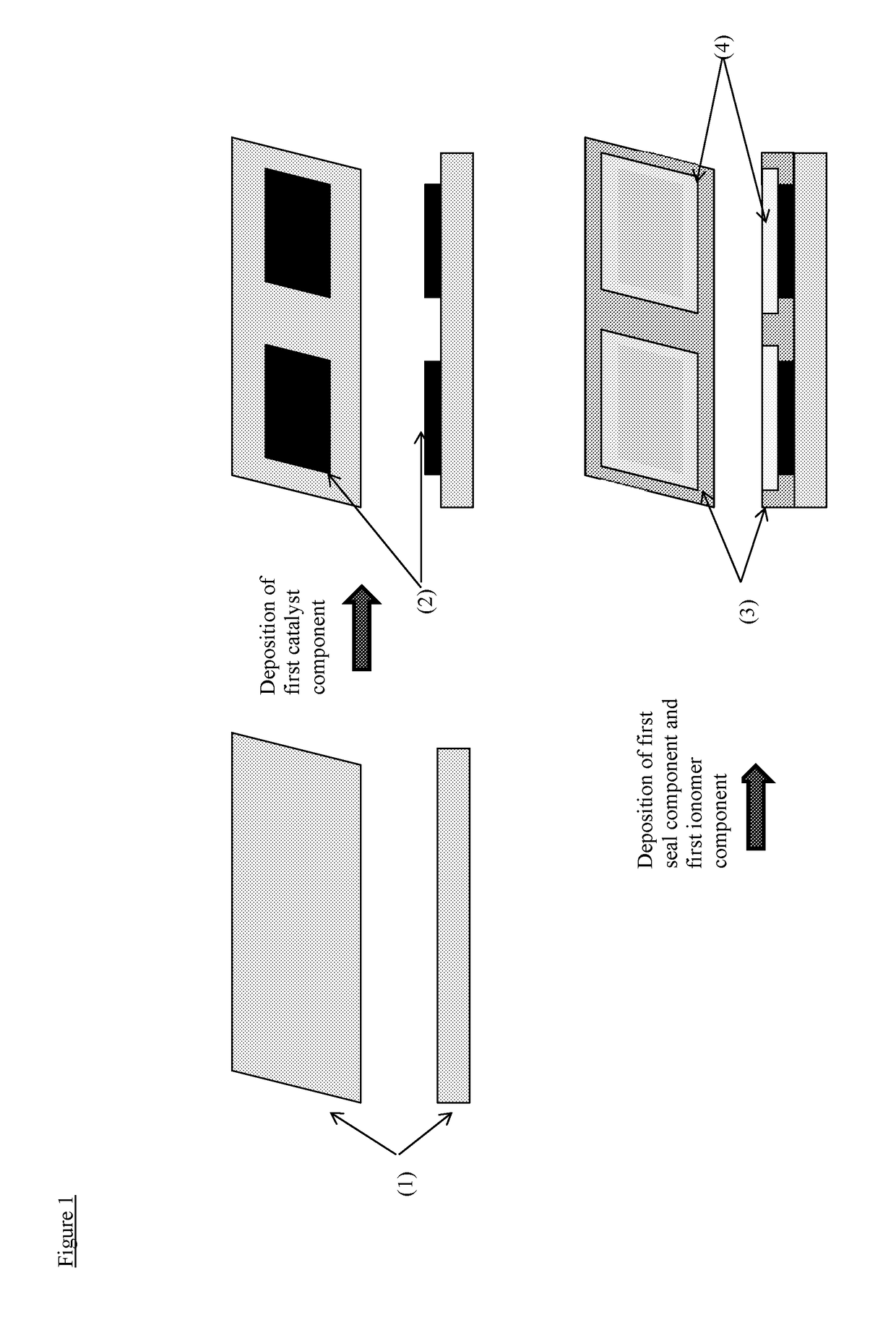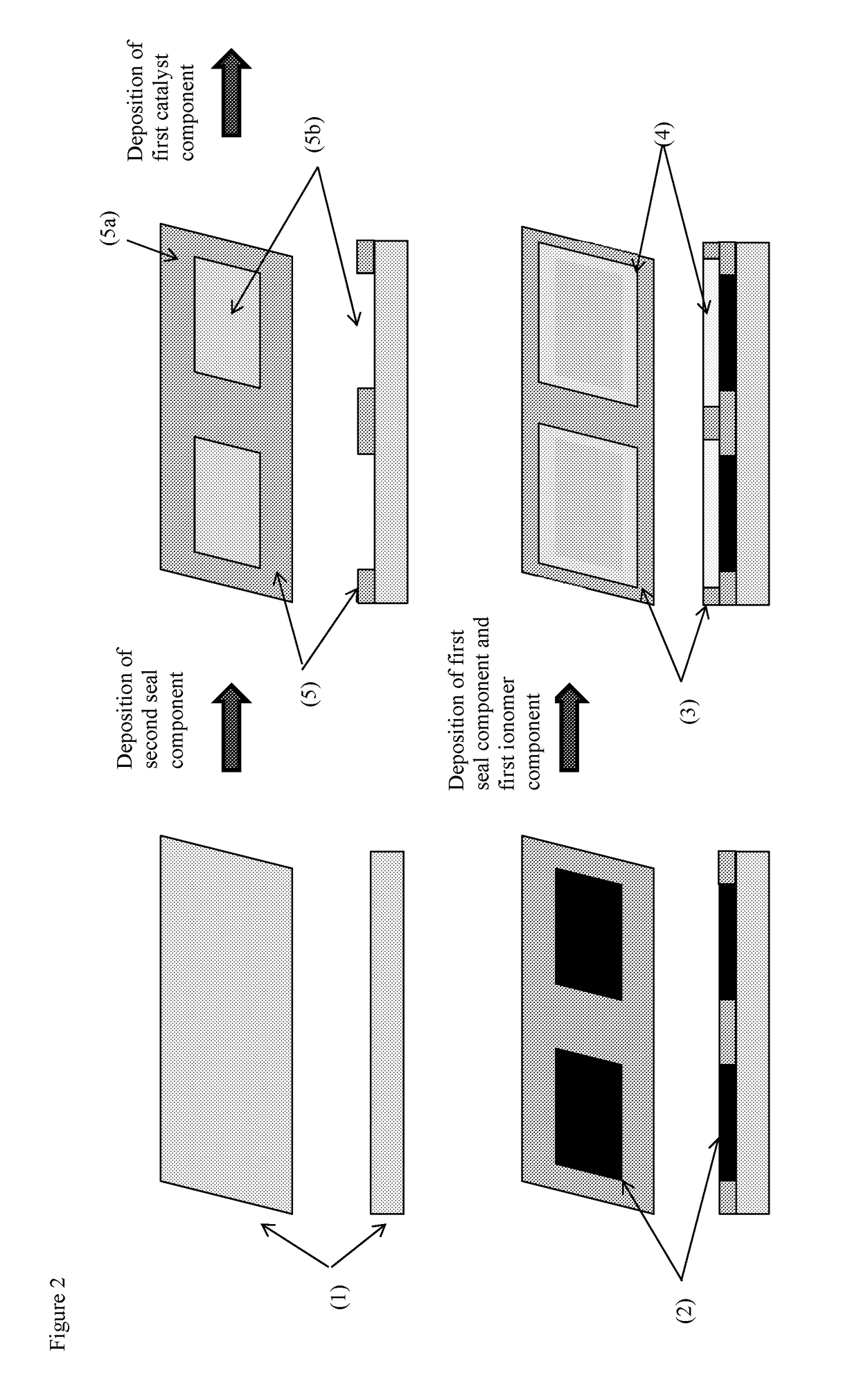Process of manufacturing a catalyst-coated membrane-seal assembly
a technology of catalyst coating and membrane sealing, which is applied in the direction of cell components, final product manufacturing, sustainable manufacturing/processing, etc., can solve the problems of premature failure, limited durability of fuel cell stacks, and intrinsic limitations of current manufacturing routes involving lamination of components in processes involving temperature and pressure, so as to reduce manufacturing costs and accelerate fuel cell commercialisation , the effect of increasing market penetration
- Summary
- Abstract
- Description
- Claims
- Application Information
AI Technical Summary
Benefits of technology
Problems solved by technology
Method used
Image
Examples
Embodiment Construction
[0026]The invention provides a process for the manufacture of a catalyst-coated membrane-seal assembly, said process comprising the steps of:
[0027](i) providing a carrier material;
[0028](ii-i) forming a first layer, said first layer being formed by:[0029](a) depositing a first catalyst component onto the carrier material such that the first catalyst component is deposited in discrete regions;[0030](b) drying the first layer;
[0031](ii-ii) forming a second layer, said second layer being formed by:[0032](a) depositing a first seal component, such that the first seal component provides a picture frame pattern having a continuous region and void regions, the continuous region comprising first seal component and the void regions being free from first seal component;[0033](b) depositing a first ionomer component onto the first layer, such that the first ionomer component is deposited in discrete regions; and[0034](c) drying the second layer;[0035]wherein the void regions of the first seal ...
PUM
| Property | Measurement | Unit |
|---|---|---|
| thickness | aaaaa | aaaaa |
| thickness | aaaaa | aaaaa |
| thickness | aaaaa | aaaaa |
Abstract
Description
Claims
Application Information
 Login to View More
Login to View More - R&D
- Intellectual Property
- Life Sciences
- Materials
- Tech Scout
- Unparalleled Data Quality
- Higher Quality Content
- 60% Fewer Hallucinations
Browse by: Latest US Patents, China's latest patents, Technical Efficacy Thesaurus, Application Domain, Technology Topic, Popular Technical Reports.
© 2025 PatSnap. All rights reserved.Legal|Privacy policy|Modern Slavery Act Transparency Statement|Sitemap|About US| Contact US: help@patsnap.com



